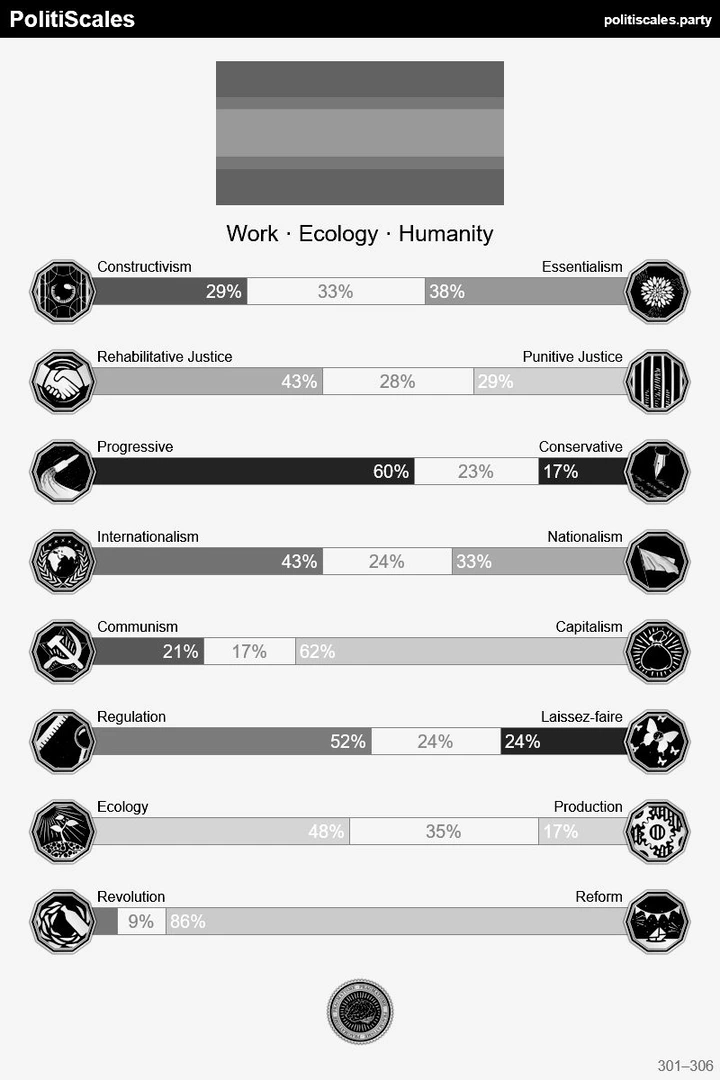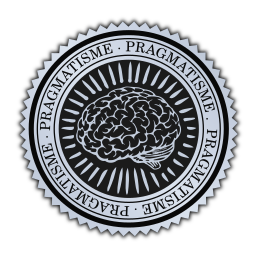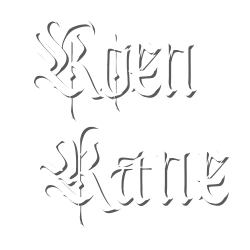Table of contents
I am an independent researcher and writer interested in various general topics like programming, philosophy, biology, self-experimentation, psychology, economics, meditation, AI, and practical life. I have an eclectic work experience that includes audio / video engineering, data analysis, business intelligence analysis, systems development, and most recently, data engineering. I am also currently writing a fictional novel.
Early on in my career (2013–2016), I worked for a video engineering group, implementing and maintaining large-scale, multi-camera, multi-site, broadcast video infrastructure and computer systems. Additionally, I produced short films, created vfx, and managed the entire archive architecture. Then, from 2016–2021, I pivoted to dual roles as a data / business analyst focused on building custom data applications and web development. From 2021–2024, I worked as a systems development engineer developing data applications for teams of analysts. Currently (Jan 2025), I am working as a data engineer. Amid these professional experiences, I have made a considerable effort to research, read, and write on topics that are interesting to me.
I run Windows 11 for my local environment, which I use for general applications, reading, consuming content, checking emails, and for my 9–5 development job. Additionally, I run a Kali Linux![]() distro and wsl Linux VM environment for all of my preferred unix applications, editing plain text files and any development I prefer to do in Linux. I try to stick to using a CLI daily, so I use Git Bash
distro and wsl Linux VM environment for all of my preferred unix applications, editing plain text files and any development I prefer to do in Linux. I try to stick to using a CLI daily, so I use Git Bash![]() for Git / file management, file editing, directory navigation, and Powershell for scripting Windows admin tasks. I spend the majority of my time in VS Code
for Git / file management, file editing, directory navigation, and Powershell for scripting Windows admin tasks. I spend the majority of my time in VS Code![]() for editing all site content.
for editing all site content.
For long-form writing, I prefer the simplicity of plain text, so I use Notepad++![]() with MarkdownViewer++.
with MarkdownViewer++.![]() Those files are saved in a folder in the koenrane.xyz local repository, then run the Mardown files through a linter to find errors, then the file is put through spellchecker-cli.
Those files are saved in a folder in the koenrane.xyz local repository, then run the Mardown files through a linter to find errors, then the file is put through spellchecker-cli.![]()
Notetaking is exclusively done in Roam Research.![]() It’s been great for extensive note-taking, searchable link repositories, and implementing evergreen notes. Firefox is where I spend a lot of my research time. I have yet to streamline my reading mediums, but the majority of my time is spent reading .pdf files from numerous sources, with one obvious repository being ArXiv.
It’s been great for extensive note-taking, searchable link repositories, and implementing evergreen notes. Firefox is where I spend a lot of my research time. I have yet to streamline my reading mediums, but the majority of my time is spent reading .pdf files from numerous sources, with one obvious repository being ArXiv.![]() (extensions: Night Eye,
(extensions: Night Eye,![]() https Everywhere,
https Everywhere,![]() Ghostery,
Ghostery,![]() Grammarly).
Grammarly).
My usual programming projects involve Python,![]() R, sql, JS, html, css, and typescript.
R, sql, JS, html, css, and typescript.![]() For Python, I opted to use an Anaconda
For Python, I opted to use an Anaconda![]() environment, and for any type of data analysis, I use Jupyter Notebooks.
environment, and for any type of data analysis, I use Jupyter Notebooks.![]() For ML / DL training and running models via gpu, I use Google Colab Pro
For ML / DL training and running models via gpu, I use Google Colab Pro![]() and Amazon SageMaker. For this site, I edit code files using Cursor Pro,
and Amazon SageMaker. For this site, I edit code files using Cursor Pro,![]() which was very helpful when refactoring to Quartz.
which was very helpful when refactoring to Quartz.![]()
Misc: I use f.lux![]() for screen tinting that automatically shifts to a warmer tone to minimize screen effects on sleep, for collective journaling sessions I use Zoom,
for screen tinting that automatically shifts to a warmer tone to minimize screen effects on sleep, for collective journaling sessions I use Zoom,![]() for everything music, Spotify,
for everything music, Spotify,![]() for domain specific servers and chatting, Discord,
for domain specific servers and chatting, Discord,![]() for recording, obs Studio,
for recording, obs Studio,![]() for advanced system information, Speccy,
for advanced system information, Speccy,![]() because I’m anal about sound mixing, PCEqualizer,
because I’m anal about sound mixing, PCEqualizer,![]() for in-browser grammar corrections Grammarly,
for in-browser grammar corrections Grammarly,![]() for scheduling, Google Calendar,
for scheduling, Google Calendar,![]() and Raven,
and Raven,![]() for rss.
for rss.
In mid-2020, after several years of dealing with consistent hardware issues from building my own PCs, I went for a desktop replacement laptop. For the past several years, I would usually build a desktop PC from curated parts for my specific needs like gaming and deep learning. To shed the responsibility of constant cable management, updating drivers, and motherboard issues, I opted for portability with a slight loss in computing power. The computing loss has been negligible, which coincided with my increasingly limited involvement in researching, building, and testing deep learning models for vision systems.
This time, I went with a refurbished 2020 Razer Blade Pro 17![]() built with an Intel Core i7 9750H (Coffee Lake)
built with an Intel Core i7 9750H (Coffee Lake)![]() cpu and a nvidia GeForce rtx 2070 Max-Q design
cpu and a nvidia GeForce rtx 2070 Max-Q design![]() gpu. So far, it’s been a solid replacement. I would not say that the portability of this machine is comparable to other laptops, but what it lacks in that department, it makes up for in processing power. So far, I’ve had a great experience with Razer as a whole, so I was eager to try its flagship computer. Compared to msi or Alien, this laptop is twice as thin, and cooling has not been an issue so far. (Major caveat: the battery life when not plugged in is abysmal).
gpu. So far, it’s been a solid replacement. I would not say that the portability of this machine is comparable to other laptops, but what it lacks in that department, it makes up for in processing power. So far, I’ve had a great experience with Razer as a whole, so I was eager to try its flagship computer. Compared to msi or Alien, this laptop is twice as thin, and cooling has not been an issue so far. (Major caveat: the battery life when not plugged in is abysmal).
Specs:
- Processor: Intel i7-9750H cpu @ 2.60GHz, 2601 Mhz, 6 Cores, 12 Logical
- Gpu: nvidia GeForce rtx 2070 Max-Q
- Storage: Samsung mzvlb512hajq
- External Storage: LaCie Rugged 1tb Drive
- Screen: 1080p 144Hz
Concerning monitors, I do not care about high resolution as much as reliability, longevity, and ability to stay within my field of view. Wide and ultra-wide screen monitors have not worked well for me as I’ve found they tend to make the user want to fill up the visual real estate with multiple windows, making the work environment too cluttered for my taste. Since my current life situation requires a 9–5 developer job, I run a secondary laptop and a third monitor that is used exclusively for work purposes and run a two wireless mouse setup to physically separate the interaction between the two work environments. My desk is a cheap, minimal work desk from Amazon![]() that I’ve had for years, and it has worked fine for the cost. Although cable management is a nightmare, even though I have spent an inordinate amount of time drilling cable holders into the frame, making it visually unappealing, it works. To limit the amount of clutter on my desk, I use a three-tier bookshelf next to the workstation where both machines can live with a minimal amount of human interaction. During downtime and while reading, I use a GD Grip Pro 70
that I’ve had for years, and it has worked fine for the cost. Although cable management is a nightmare, even though I have spent an inordinate amount of time drilling cable holders into the frame, making it visually unappealing, it works. To limit the amount of clutter on my desk, I use a three-tier bookshelf next to the workstation where both machines can live with a minimal amount of human interaction. During downtime and while reading, I use a GD Grip Pro 70![]() as a stress reliever and to build general grip strength. In addition to regular job requirements, family obligations require me to be able to see my phone screen all day, so I use a Nulaxy dual folding phone stand
as a stress reliever and to build general grip strength. In addition to regular job requirements, family obligations require me to be able to see my phone screen all day, so I use a Nulaxy dual folding phone stand![]() to minimize physical interaction with the device when I receive messages.
to minimize physical interaction with the device when I receive messages.
- Monitors: Acer G276hl
 (2)
(2) - Mouse 1: Logitech MX Master 3

- Mouse 2: Logitech MX Ergo
 ) (Trackball)
) (Trackball) - Keyboard: Logitech K780
- Audio: [[(https://www.razer.com / gaming-speakers / razer-leviathan / RZ05-01260100-R3U1
 ) | Razer Leviathan]]
) | Razer Leviathan]] - Headphones: Steelseries Arctic 3

- Desk Pad: dechanic Control Edition Extended Heavy
This self-report inventory measures the big five personality traits using the ipip Big-Five Factor Markers from Open-Source Psychometrics Project![]()
Results:
- Extroversion: 4th percentile
- Neuroticism / Emotional Stability: 30th percentile
- Agreeableness: 40th percentile
- Conscientiousness: 57th percentile
- Openness to Experience: 96th percentile

Results from Clearer Thinking.![]() I was not particularly fond of the questions selected for this assessment, but it’s the only one I found that made an effort to be comprehensive. If I took it again, I’m positive that I would get different results. It might be worth taking another more comprehensive test.
I was not particularly fond of the questions selected for this assessment, but it’s the only one I found that made an effort to be comprehensive. If I took it again, I’m positive that I would get different results. It might be worth taking another more comprehensive test.
- Abstract Objects: Platonist
- Aesthetic Beauty: Aesthetic Subjectivist
- External World: External-world Realist
- Free Will: Compatibilist
- God: Agnostic
- Knowledge Claims: Contextualist
- Laws of Nature: Anti-Humean
- Meta-Ethics: Moral Anti-Realist
- Mind: Physicalist
- Moral Judgment: Non-Cognitivist
- Newcomb’s Problem: One-Boxer
- Normative Ethics: Consequentialist
- Politics: Libertarian
- Science: Scientific Realist
- Teletransporter: Leads to Death
- Truth: Epistemic Truth
- Zombies: The Idea is Conceivable-and-Possible
This assessment was taken in August 2022 and is a decent representation of political leanings and beliefs. I disagree slightly on a few of the result metrics, but overall, it’s a nice visual representation of my political views. It might be beneficial to take it again soon to measure the difference. The “Regulation” result seemed way overshot compared to how I personally feel, but I attribute that to questions that were selected for the assessment. The seal at the bottom of the graphic sums up my political results into a single identifier, which is ‘Pragmatism.’ This assessment is measured using the 8 ideological values,![]() which are broken down into 16 subcategories, two in each domain.
which are broken down into 16 subcategories, two in each domain.


When I am away from my computer, I write scribbles of notes in an 8"x 5” Moleskin graph paper notebook![]() and my standard writing utensil is the Zebra f301 Compact,
and my standard writing utensil is the Zebra f301 Compact,![]() which I value for its fine ballpoint, and ability to be satisfyingly transported in any size pocket. Knowing that I am quite forgetful, spontaneous handwritten notes have helped maintain my general knowledge bank in Roam. I tend to compartmentalize my modes of operation throughout the day, where most of my ideas come to me while completing mundane tasks around the house. Also, sometimes it’s just nice to write without a screen. I’ve made an effort to implement a soft version of Evergreen Notes, although I have not coded it into muscle memory yet. There are gaps of many months between sets of handwritten notes that don’t form any sort of linearly cohesive note structure, but I try to make up for that by densely linked notes in Roam.
which I value for its fine ballpoint, and ability to be satisfyingly transported in any size pocket. Knowing that I am quite forgetful, spontaneous handwritten notes have helped maintain my general knowledge bank in Roam. I tend to compartmentalize my modes of operation throughout the day, where most of my ideas come to me while completing mundane tasks around the house. Also, sometimes it’s just nice to write without a screen. I’ve made an effort to implement a soft version of Evergreen Notes, although I have not coded it into muscle memory yet. There are gaps of many months between sets of handwritten notes that don’t form any sort of linearly cohesive note structure, but I try to make up for that by densely linked notes in Roam.
-
Coursera (2017–2018) Deep Learning Specialization: To my knowledge, I was in the first comprehensive DL course that Coursera offered which was taught by Andrew Ng. Extremely technical with a focus on the foundational mathematics involved with deep learning.
-
Udacity (2019–2020) Self-Driving Car, Autonomous Vehicles: This focused on computer vision and machine learning using Convolutional Neural Networks (cnns), vehicle motion and control, and performance programming in C++.
-
Udacity (2020) Deep Learning with PyTorch: I received a Bertelsmann Tech Scholarship for the AI track, so I was able to participate in the course, which focused on Recurrent Neural Networks (rnns) and deploying PyTorch models.
.png) ༺
༺New Links & Articles: newsletter![]() & rss
& rss
koenrane@protonmail.com

